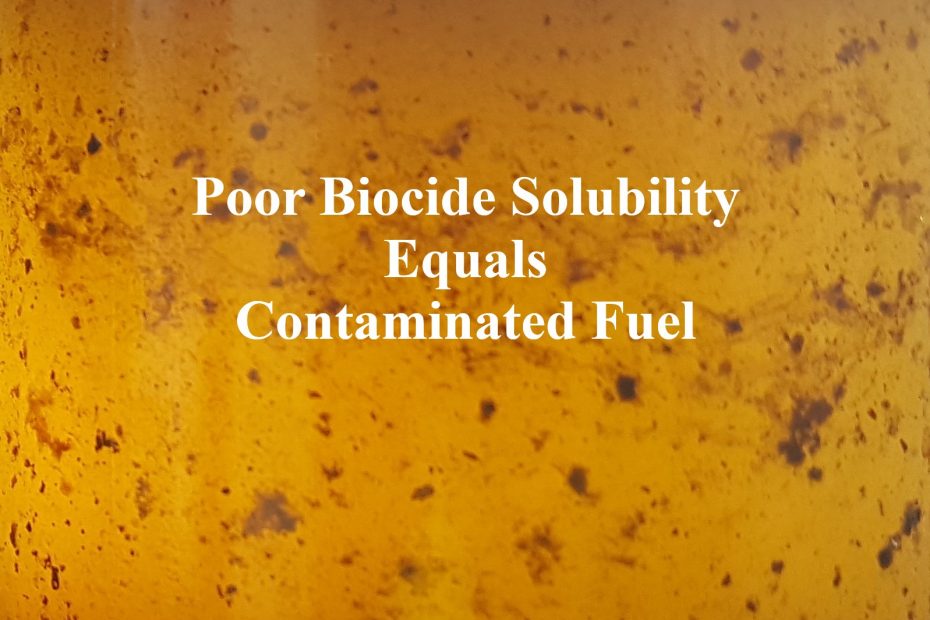Why do biocides fail to adequately decontaminate a fuel system? One major cause is due to insolubility. If a biocide cannot properly mix and remain in the fuel, it will not be able to provide adequate decontamination nor will it be able to protect a fuel system during long-term storage. In fact, solubility issues will contribute to serious problems, like engine failure and microbial adaptation leading to catastrophic events.
On March 29, 2019, one such event happened when a 787 departed Australia heading for Japan experienced a loss of engine thrust. Fortunately, the aircraft landed without injury but what followed were months of investigations into why the engines failed in flight. It was found that the fuel biocide used to kill microbial contamination in the fuel system had caused the problem. That biocide was Kathon FP 1.5. Prior to this incident, there had been other issues identified with the use of Kathon. Most of those incidents were thought to be a result of overtreatment. This incident was not. The investigation found that it was not due to overtreatment. In fact, the problem was something already known by those familiar with the product. It had a solubility issue. Kathon never blended with the fuel even though the manufacturer’s recommended method of application was used – blending by injection.
Unfortunately, this happens more often than anyone realizes. Like most other “fuel” biocides Kathon was designed for water applications and not specifically for fuel. It is miscible in water (100% water soluble) but offers very poor fuel solubility. Herein lies the problem. Solubility is a key component to a biocide’s effectiveness.
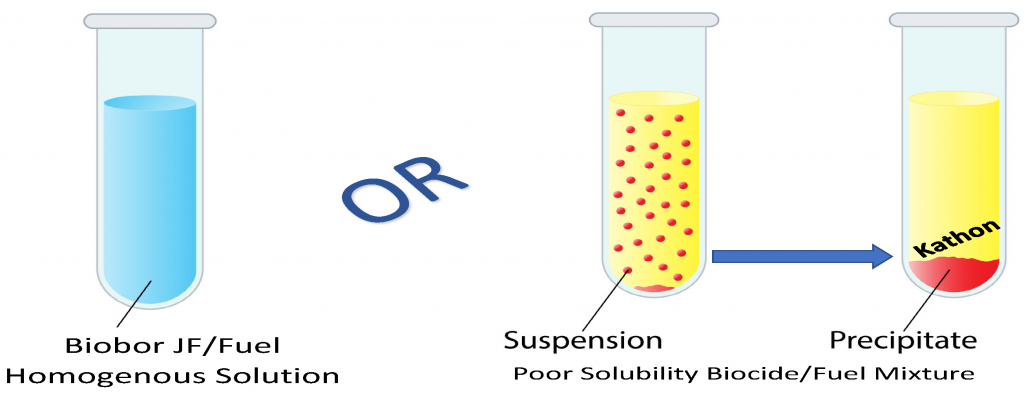
In contrast to Kathon’s poor solubility, Biobor JF is miscible in fuel – 100% soluble, forming a homogenous solution with the fuel. Kathon is less than 7% soluble, resulting in the precipitation of solids and unprotected fuel systems with the potential to do catastrophic damage. Notice the characterization chart below. The contrast between Biobor and Kathon is plain to see. Kathon is fully water soluble, leaving a fuel system unprotected and Biobor is 100% soluble, protecting 100% of the fuel and the system it touches.
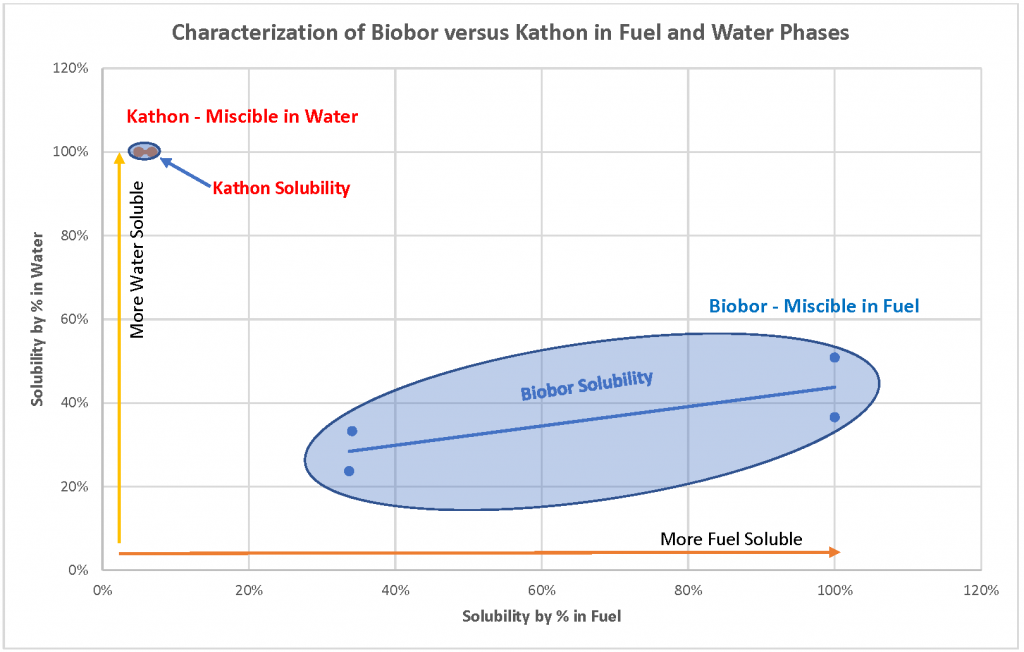
“The active ingredient in KATHON FP 1.5 microbicide is completely soluble in water. Note that the product solvent, dipropylene glycol, is not completely soluble in fuel.“
the manufacturers literature refers to Kathon’s fuel solubility issues.
The aviation industry requires biocides to be injected into the fuel stream as fuel is being uplifted into the aircraft. This method gives the biocide the best chance of forming a homogenous solution. But even this most effective method did not work with Kathon. Now imagine pouring the biocide into your supply tank or generator belly tank. With little or no agitation, Kathon does not have a chance to solubilize. It will sink to the bottom of the tank, creating hot spots and leaving the fuel and system contaminated and unprotected.
The same settling and solids formation that caused engine failure in the 787 will happen in your diesel supply tanks and generator belly tanks.
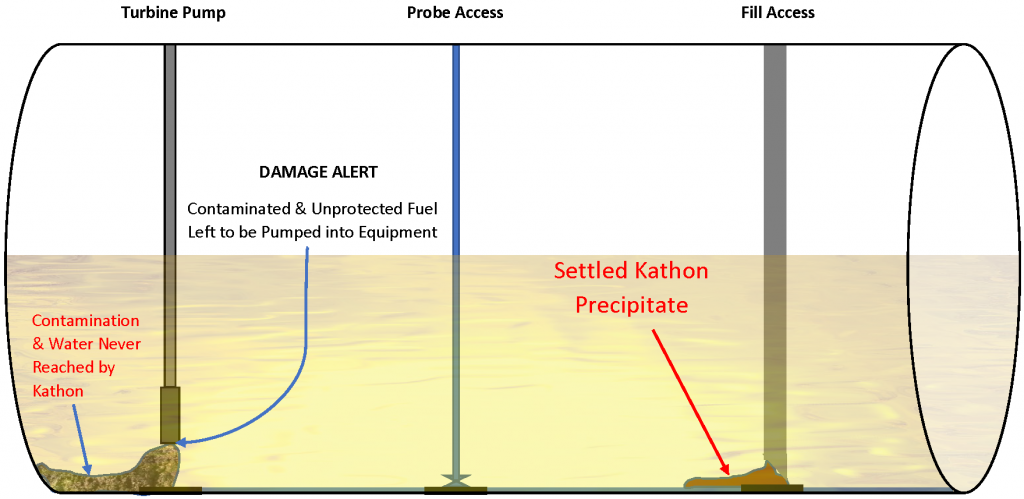
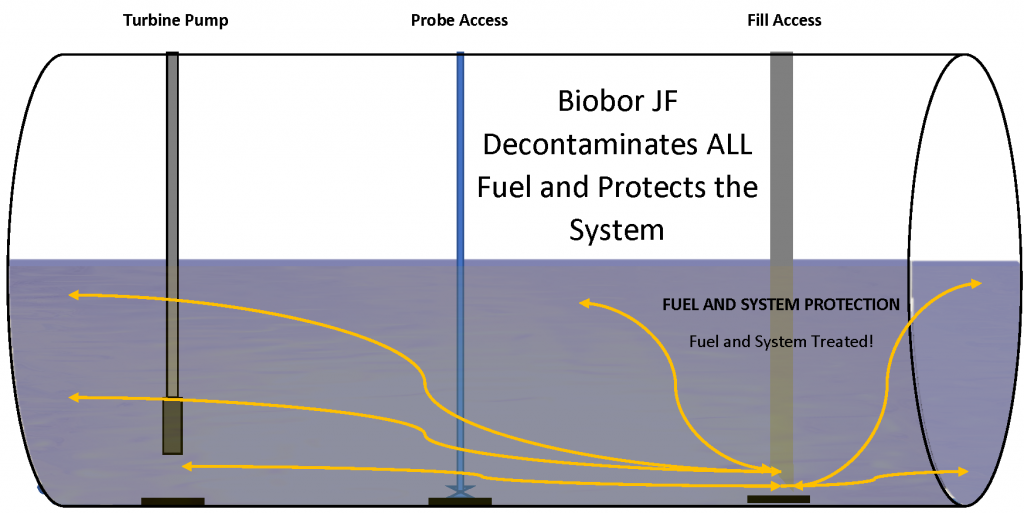
The diagrams above illustrate the differences in solubility between Kathon and Biobor JF. Imagine the same problem in a more complex system, like a generator belly tank. If the biocide cannot disperse and solubilize in an open tank, it will never solubilize in a baffled tank and will not have the expected efficacy. Like the illustration shows, if there are water and microbes in pocketed areas of the fuel system, Kathon will never make it there. In contrast, Biobor JF will evenly distribute throughout the fuel, with or without agitation. Once it comes into contact with microbes it makes an effective kill. If water is present, Biobor JF is designed to properly partition enough biocide into the water to kill any microbes present, leaving biocide in the fuel to continue protecting. Both fuel and water phases are decontaminated with Biobor JF.
IF A BIOCIDE CANNOT TOUCH ALL OF THE FUEL, IT CANNOT BE EFFECTIVE, LEAVING THE FUEL AND SYSTEM IN WORSE CONDITION THAN BEFORE THE TREATMENT
Kathon’s solubility problem creates other problems. Research shows an ineffective biocide application like those created by Kathon, is a cause of microbial adaptation leading to more microbes. These are now resistant to the very biocide being used to kill them. Problem solved – NO! Problem created – YES!
Are there other biocides with the same problem? The answer is yes! The Kathon chemistry is packaged under several different names. Since the banning of Kathon FP 1.5 in aviation, the manufacturer repackaged the product for non-aviation applications under the name Kathon Fuel 15 Biocide. It’s also packaged under the names FQS 1.5 Microbicide, FuelClear and Bellicide ISO among others. The name may be different, but the chemistry is the same and so are the problems. There are a lot of other reasons to avoid using Kathon and Kathon like products. There are many more reasons to begin using Biobor JF. If you want to know more, follow our BLOG and check out the Biocide Assessment for more information.
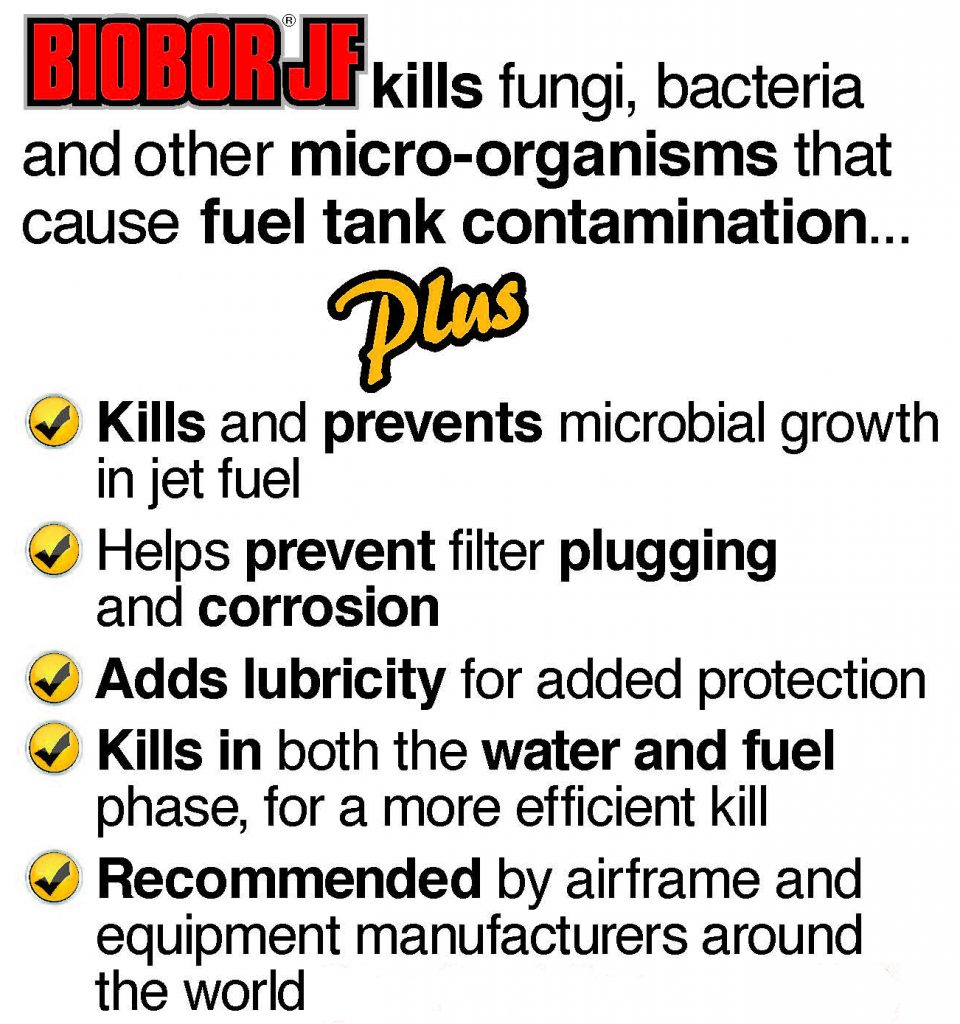
Share the Post
